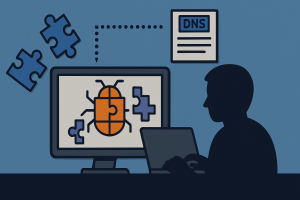 A new cybersecurity threat is emerging as attackers use DNS records—the very system that directs internet traffic—to hide malware. Instead of relying on email attachments or suspicious downloads, bad actors are embedding malicious payloads into DNS TXT records. This method sneaks malicious code past traditional defenses because security tools often ignore DNS traffic.
A new cybersecurity threat is emerging as attackers use DNS records—the very system that directs internet traffic—to hide malware. Instead of relying on email attachments or suspicious downloads, bad actors are embedding malicious payloads into DNS TXT records. This method sneaks malicious code past traditional defenses because security tools often ignore DNS traffic.
DNS, or Domain Name System, acts like the internet’s phonebook, translating domain names into IP addresses. It is so fundamental and routine that most security systems allow it without scrutiny. That makes it a perfect hiding place. According to researchers at Infoblox, attackers are disguising shellcode—malicious binary instructions—inside base64-encoded TXT records. These look like harmless text but are reassembled and executed by compromised devices once fetched. [Read more…]
 The crew behind the 3AM strain of ransomware has been hitting companies using a familiar playbook: flood the target with junk emails, follow up with a fake IT call, and convince someone to hand over remote access. It’s not new, but it still works. Probably more than it should.
The crew behind the 3AM strain of ransomware has been hitting companies using a familiar playbook: flood the target with junk emails, follow up with a fake IT call, and convince someone to hand over remote access. It’s not new, but it still works. Probably more than it should. Microsoft is quietly pushing out a OneDrive update that’s catching IT departments off guard. A new feature prompts users—by default—to connect their personal OneDrive accounts to corporate machines. No setup needed. The feature just appears and offers a quick, seamless sync between personal and business storage.
Microsoft is quietly pushing out a OneDrive update that’s catching IT departments off guard. A new feature prompts users—by default—to connect their personal OneDrive accounts to corporate machines. No setup needed. The feature just appears and offers a quick, seamless sync between personal and business storage.